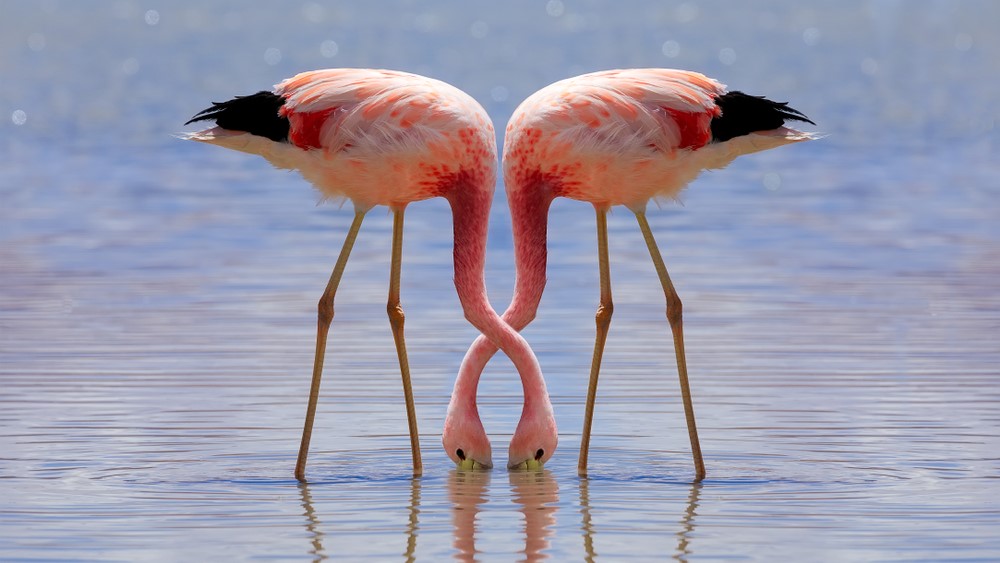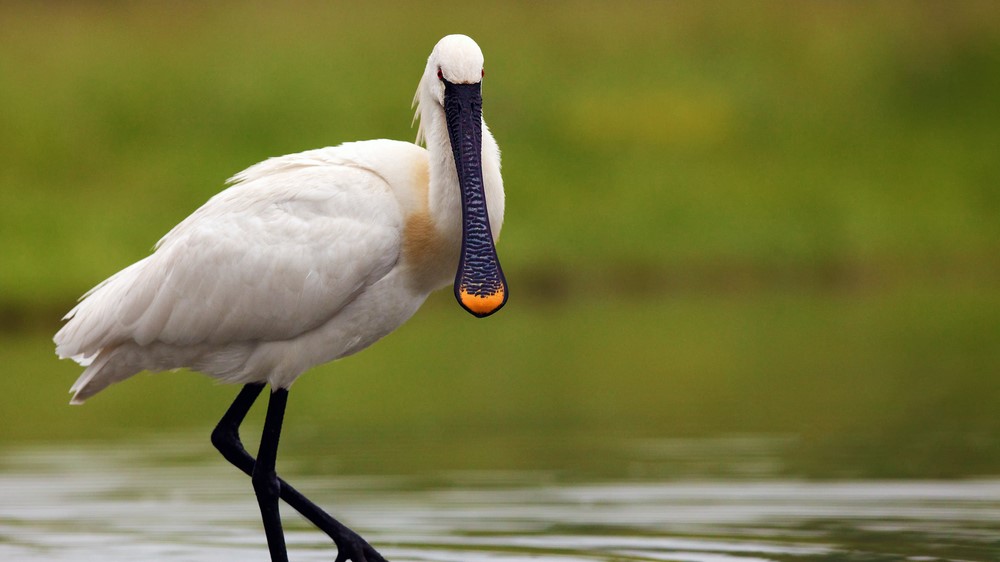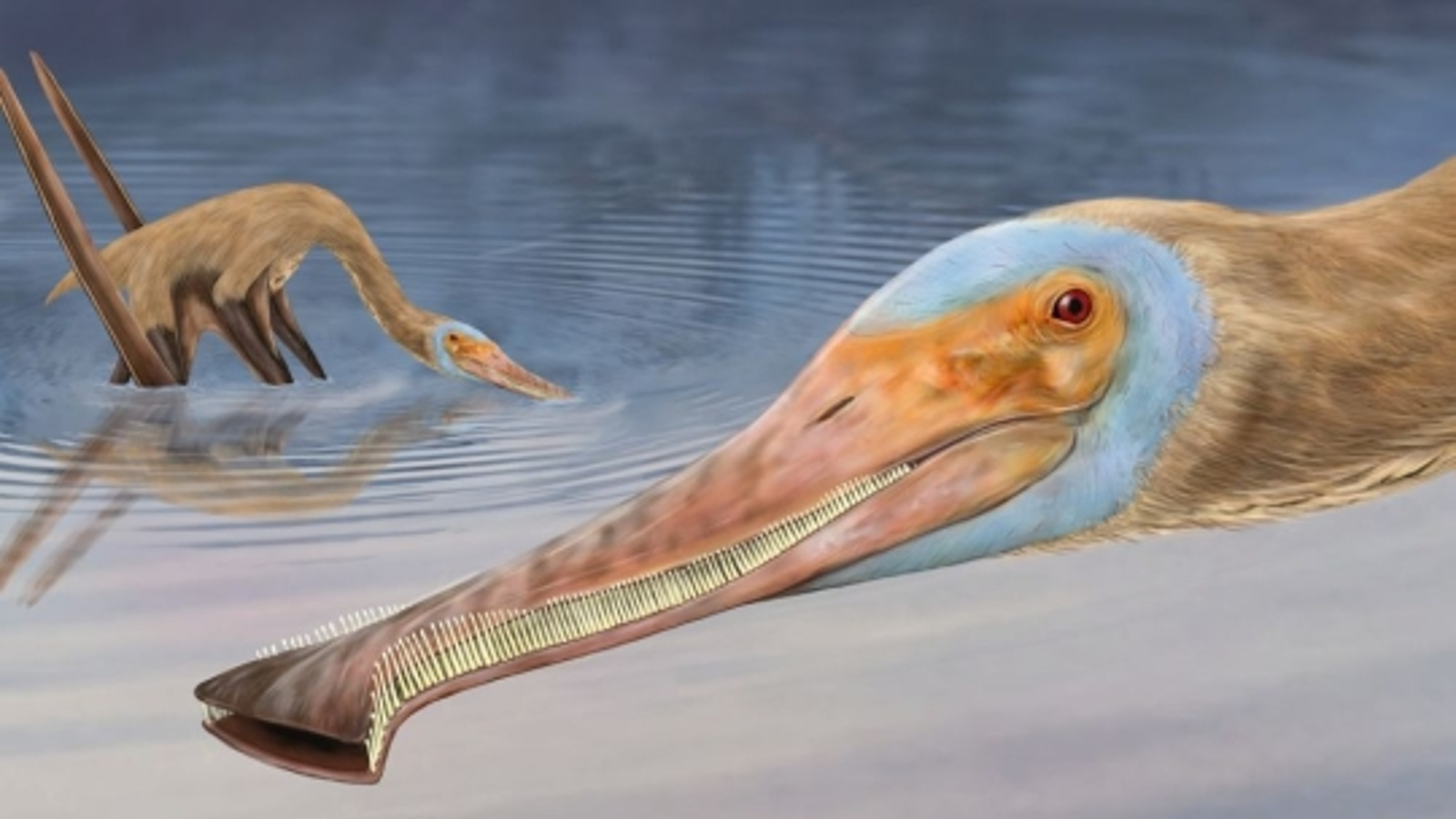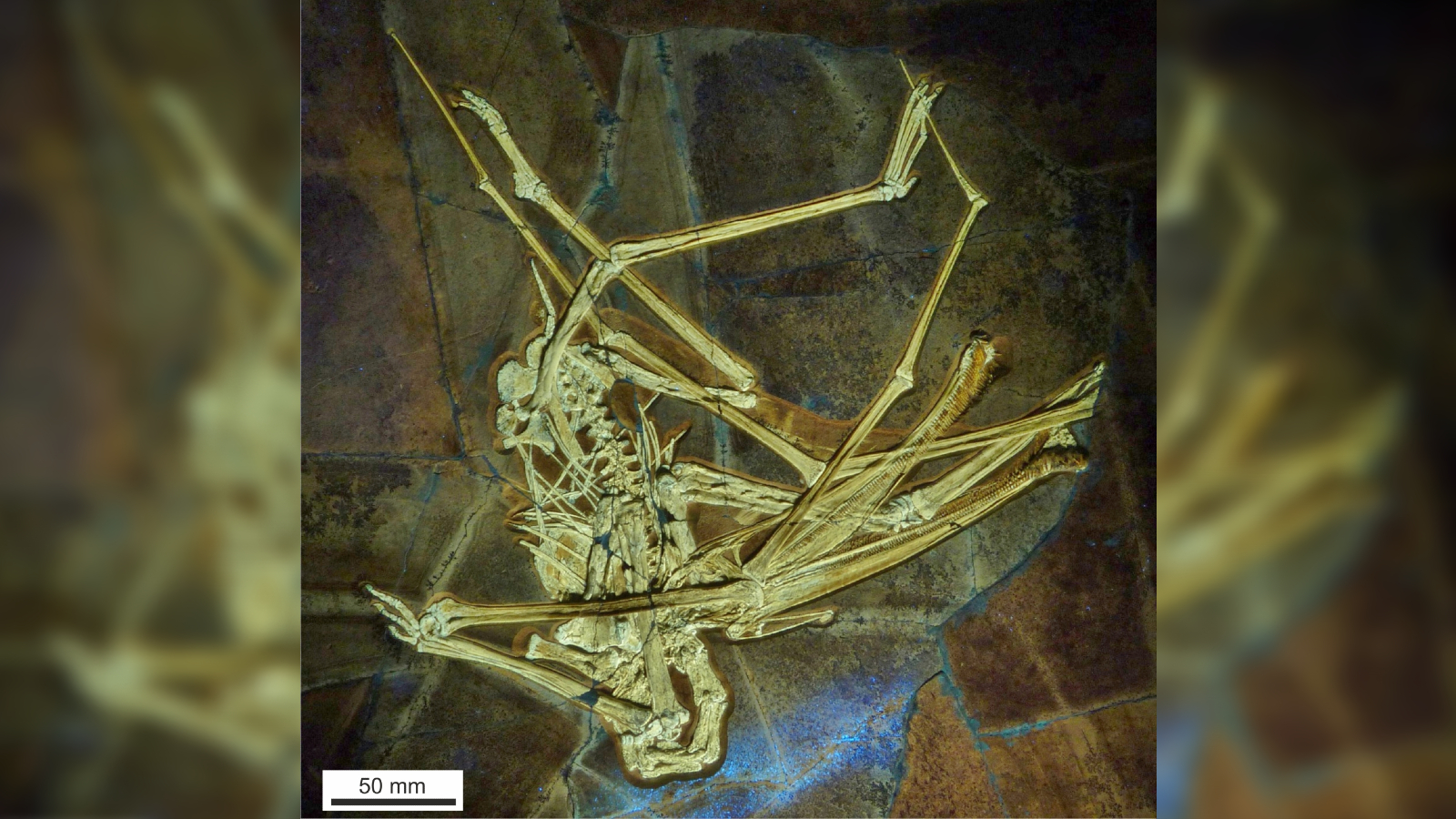Never-before-seen pterosaur had nearly 500 teeth and ate like a flamingo
A never-before-seen species of pterosaur had hundreds of hooked teeth that helped it filter its food in a similar way to living flamingos.
During the late Jurassic, a pterosaur with an unusually shaped bill lined with hundreds of tiny, hooked teeth stalked the waters of what is now Bavaria, Germany. The now-extinct animal likely gulped down its seafood prey while wading in ancient ponds and lakes, just like flamingos chow down today, a new study shows.
The newfound species was accidentally unearthed at an abandoned mine in the Franconian Jura area of Bavaria, a hotspot for pterosaur fossils. The researchers had been attempting to uncover crocodile bones from a limestone slab when they stumbled across the new specimen, which was incredibly well preserved and contained a near-complete skeleton along with some intact ligaments. The remains are likely between 157 million and 152 million years old, based on the surrounding sediments.
In a study, published Jan. 21 in the German journal PalZ, researchers described the new species, which had a number of striking features that set it apart from other pterosaurs — flying, bird-like reptiles that were cousins of the dinosaurs and roamed the skies during most of the Mesozoic era (252 million to 66 million years ago).
"The jaws of this pterosaur are really long and lined with small, fine, hooked teeth, with tiny spaces between them like a nit comb," study lead author David Martill, a paleobiologist at the University of Portsmouth in the U.K., said in a statement. The creature's bill had a shape similar to modern spoonbills in the genus Platalea and was slightly curved upward, he added. "There are no teeth at the end of its mouth, but there are teeth all the way along both jaws right to the back of its smile."
Related: Bizarre neck bones helped pterosaurs support their giraffe-size necks and huge heads
The specimen, which had a wingspan of around 3.6 feet (1.1 meters), contained 480 teeth that were between 0.08 and 0.43 inches (2 and 11 millimeters) long — the second-highest number of gnashers found in any pterosaur.
The hooked shape of the teeth was something "we've never seen before in a pterosaur," Martill said. "These small hooks would have been used to catch the tiny shrimp the pterosaur likely fed on — making sure they went down its throat and weren't squeezed between the teeth."
Get the world’s most fascinating discoveries delivered straight to your inbox.
This is similar to how flamingos filter out tiny crustaceans and algae from muddy or silty water in shallow lakes and lagoons. The only difference is that flamingos use small, bristly hairs called lamellae to filter their food instead of hooked teeth.


The spoonbilled pterosaur's filter-feeding skills have also been compared to whales' feeding habits. The newfound animal was named Balaenognathus maeuseri — the genus name is a nod to the living genus Balaenoptera, which contains filter-feeding baleen whales such as blue whales (B. musculus), fin whales (B. physalus) and minke whales (B. acutorostrata). The toothy pterosaur's species name, maeuseri, was given in remembrance of one of the studies authors, Matthias Mäuser, who died as the paper was being written.
Related: Missing link in pterosaur origins discovered
The new species has been placed in the family Ctenochasmatidae, which contains other pterosaurs that use their teeth to filter feed. But the "new specimen is very different from other ctenochasmatids" because the teeth on its upper and lower jaws are "a mirror image of each other," Martill said. In other species, the lower jaw normally houses slightly longer teeth, he noted.
The fossil's pristine condition enabled the team to infer such detailed characteristics about the new species. "The carcass must have been at a very early stage of decay" when it fossilized, meaning it was likely buried almost straight after it died, Martill said.
The specimen is currently on display in the Bamberg Natural History Museum in Germany.

Harry is a U.K.-based senior staff writer at Live Science. He studied marine biology at the University of Exeter before training to become a journalist. He covers a wide range of topics including space exploration, planetary science, space weather, climate change, animal behavior and paleontology. His recent work on the solar maximum won "best space submission" at the 2024 Aerospace Media Awards and was shortlisted in the "top scoop" category at the NCTJ Awards for Excellence in 2023. He also writes Live Science's weekly Earth from space series.




